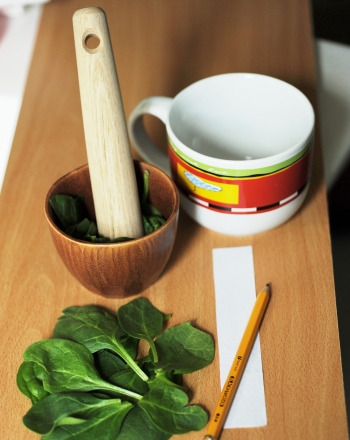
Cargando...
Que puis-je faire ?
226345 materialEducativo
textoFiltroFichatipo de documento Chimie - Expérimentation/Travaux pratiques
À propos de cette ressource...

Photosynthesis, you might remember, is the process in which plants convert light energy from the sun to chemical food energy. Brightly colored pigments in leaves are essential to the first steps of light absorption, with chlorophyll being the most important pigment. There are two main types of chlorophyll: chlorophyll A, which is bluish-green, and chlorophyll B, which is yellowish-green. During most of the growing season, leaves contain more chlorophyll than any other pigment, making them appear green. In the fall, however, chlorophyll begins to break down, and the other pigments, which have been there all along, are finally revealed: we see pretty yellow and orange fall leaves. The yellow pigments in leaves are called xanthophylls, and the orange pigments are called carotenoids (carotenoids are easy to remember because they are orange like a carrot!).If you want to see the hidden yellow and orange pigments in green leaves for yourself, you can use a simple but powerful technique called chromatography, which is the separation of a mixture by passing it through a medium (in our case, filter paper) through which different parts of the mixture will move at different rates. Chromatography works because different substances in a mixture have different degrees of solubility. Solubility refers to how much of a particular substance can dissolve in a particular solvent. For instance, you can dissolve lots of sugar in water, but not quite as much salt. In chromatography, the least soluble substances fall out of the filter paper column first, while the most soluble one travel the furthest up the paper.How Can the Different Pigments in Leaves Be Revealed?
It is an educational content by education.com.
By clicking on the title of this resource, you will be redirected to the content. If you want to download the project, you just have to join the website, which now is for FREE.
Contenu exclusif pour les membres de

Mira un ejemplo de lo que te pierdes
Autores:
Catégories:
Étiquettes:
Fecha publicación: 12.5.2016
La licence originale de la ressource est respectée.
Que se passe t’il ? Inscrivez-vous ou lancer session
Si ya eres usuario, Inicia sesión
Ajouter à Didactalia Arrastra el botón a la barra de marcadores del navegador y comparte tus contenidos preferidos. Más info...
Commenter
0